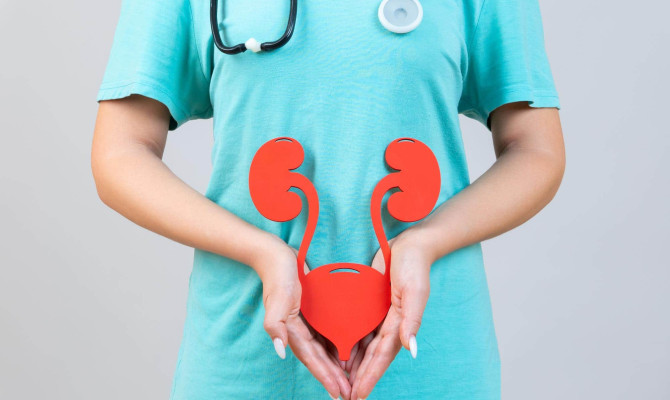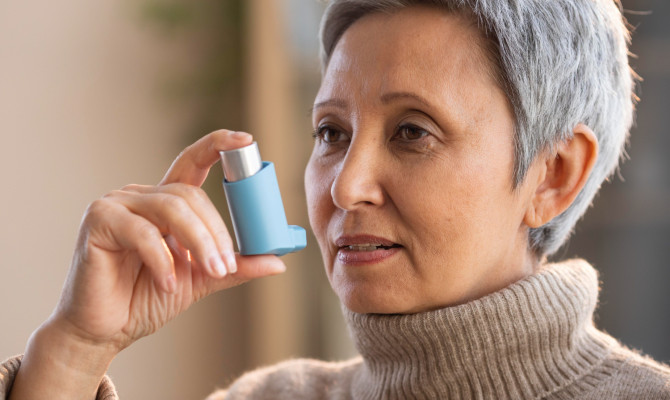Cataract: Symptoms, Complications, and Management

- Cataract
- 22 Aug 2023
Overview
What is Cataract ?
A cataract is a condition where the lens located behind the pupil in the eye becomes cloudy instead of being clear. Although cataracts can occur at any age, most cases are associated with aging. Nonetheless, infants, young children, and middle-aged adults can also develop cataracts. It may obstruct normal eyesight depending on its size and position. The iris, which is the colored part of the eye, sits in front of the lens that is located inside the eye. The lens in a normal eye refracts light onto the retina, which then transmits the image to the brain through the optic nerve. Visual problems occur when a cataract clouds the lens, as it scatters light and makes it difficult for the lens to focus properly. The lens is largely comprised of proteins and water. Alterations in the proteins and fibers of the lens are responsible for the cloudiness of the lens. 1Overview | Researched based study from Aoa.org

Types
Different types of cataracts
- Age-related cataracts: This type of cataract can occur as a result of natural changes in your eye’s lens.
- Cataracts caused by trauma- Serious eye injuries can induce lens damage and a traumatic cataract.
- Radiation cataracts- This can be caused by both the sun’s ultraviolet (UV) rays and radiation therapy for cancer.2Types | Researched based study from Nei.nih.gov
- Pediatric cataracts: Children can also suffer from cataracts, which may either be congenital (present at birth) or acquired over time.2Types | Researched based study from Nei.nih.gov
- Secondary cataracts: Scar tissues in the eye might form after cataract surgery, causing your vision to become clouded again. This is known as a secondary cataract. It is also known as after-cataract or posterior capsule opacification. 2Types | Researched based study from Nei.nih.gov
Symptoms
Symptoms of cataract
- Blurred vision
- Poor night vision
- Brown-tinted vision 3Symptoms | Researched based study from Jamanetwork.com
- When driving at night, there is glare.
- Difficulties distinguishing faces or license plates.
- Extreme long-sightedness is common in diabetic people. 4Symptoms | Researched based study from Healthdirect.gov
- A brighter light is required to read.
- Intolerance to bright sunshine, headlights, or illumination.
- Double vision. 5Symptoms | Researched based study from Clevelandclinic.org
Risk
Risk factors of cataract
Here are some factors that increase the risk of cataracts:
- Age: The likelihood of developing cataracts rises with age, making older individuals more susceptible to this condition.
- Family history: Cataracts may be hereditary and tend to have a familial pattern.
- Smoking: The habit of smoking is linked to an increased risk of cataract development.
- Diabetes: Individuals who have diabetes have a greater likelihood of developing cataracts.
- Prolonged exposure to sunlight: Extended exposure to sunlight, particularly to its ultraviolet radiation, can be a contributing factor in the development of cataracts.
- Previous eye injury or inflammation: Injuries or inflammation of the eye can increase the risk of cataracts.
- Certain drugs: Prolonged use of some drugs, including corticosteroids, may raise the risk of cataracts.
It is important to note that while these factors may increase the risk of cataracts, they do not necessarily cause cataracts. Getting regular eye check-ups can aid in detecting cataracts early, which in turn can help prevent loss of vision through prompt treatment.6Risk | Researched based study from Aao.org
Consequences
Consequences of cataract
Cataracts usually appear in a person’s lens as they get older. A cataract’s early phases might not be problematic. Cloudiness may affect only a small section of the lens. On the other hand, the cataract could enlarge with time and cover more of the lens. Cataracts worsen with time and can lead to
- Vision Loss: Cataracts can cause significant vision loss, which can make it difficult to perform daily tasks such as driving, reading, and watching television.
- Increased Risk of Falls: As vision deteriorates due to untreated cataracts, the risk of falls increases. The condition can be particularly perilous for elderly individuals since they are more prone to falls and may suffer severe injuries as a result.
- Decreased Quality of Life: Untreated cataracts can significantly decrease patients’ quality of life, making it harder to enjoy activities they once loved.
- Blindness: If left untreated for long periods, cataracts can eventually lead to blindness, which can have a significant impact on a person’s independence and quality of life.7Consequences | Researched based study from Tucson2020.com
Diagnosis
Diagnosis of cataract
The detection of cataracts usually depends on a thorough eye examination. During the exam, the eye doctor will review the patient’s medical history and symptoms, conduct a visual acuity test, and perform a dilated eye exam.
Acuity of vision
- A test of visual acuity evaluates the clarity of your vision at different distances. To assess your visual acuity, your doctor will ask you to read letters of different sizes from an eye chart. Your eyes will be evaluated both separately and collectively. This aids in determining the accuracy of your eyesight at various distances. A visual acuity test is a quick, painless technique to examine your eyesight.
Sensitivity to Contrast
- The purpose of this exam is to determine how easily you can distinguish an object from its surroundings. If you have trouble identifying an object against a low-contrast backdrop, you have weak contrast sensitivity. Image contrast can be reduced by cataracts. This is due to the cataract’s ability to scatter light and generate glare.8Diagnosis | Researched based study from Harvard.edu
Slit-lamp examination
- During this examination, your doctor uses a specialized microscope with a bright light to examine different parts of your eye. The doctor will inspect your cornea, which is the transparent outer layer of your eye. Additionally, your doctor will examine your iris, which is the colored part of your eye, as well as the lens located behind it.8Diagnosis | Researched based study from Harvard.edu
Examination of the retina
- To dilate your pupils, which control the amount of light entering your eyes, your doctor will instill drops into your eyes. This enables them to view the retina (the tissue located at the back of the eye) and the cataract with greater clarity.9Diagnosis | Researched based study from Bmj.com
Pupil dilation
- Pupil dilation is a standard technique for detecting cataracts. The pupil of your eye expands when it is dilated. As a result of this, your healthcare provider will be able to visualize your entire lens. A clear image of the entire lens allows your healthcare professional to identify whether a cataract is hurting your vision.8Diagnosis | Researched based study from Harvard.edu
Treatment
Treatment of cataract
In moderate cataracts
- For moderate kinds of cataracts, glasses can be provided, and using brighter lighting when reading, for instance, can be beneficial.
However, when the problem worsens with age, surgery may ultimately be the only way to treat more serious cataracts.10Treatment| Researched based study from Mayoclinic.org
In severe cases
Surgery with a little incision
- Phacoemulsification is another term that your doctor may use to refer to this procedure. .9Treatment | Researched based study from Bmj.com
- During this procedure, your surgeon creates a tiny cut in your cornea.
- A small device that produces ultrasonic waves is inserted into your eye to disrupt the cloudiness in your lens. After breaking up the cloudiness in the lens, the components are removed, and an artificial lens is implanted in its place.
Surgery involving a large incision
- While less common, doctors may recommend this approach for larger cataracts that are causing significant vision problems beyond what can be treated with the more common procedure.
- Extracapsular cataract extraction is another term used to refer to this less common surgical approach for treating larger cataracts. the surgeon removes the clouded lens in one piece and replaces it with an artificial lens. .9Treatment | Researched based study from Bmj.com
- This procedure will most likely take a little longer to heal than the small-incision kind.
Surgery using femtosecond lasers
- In this method, a laser is used to break up the cloudy lens into smaller pieces, which are then removed and replaced with an artificial lens.
- The new lens will then be implanted, similar to the other types of cataract surgery. Your healthcare provider may suggest this method if you have astigmatism in addition to cataracts.
- Your doctor may recommend reshaping your cornea with a laser to correct the problem.9Treatment | Researched based study from Bmj.com
- Cataract surgery is typically performed as a daycare procedure and does not need a hospital stay. 11Treatment | Researched based study from News.medical.net
Self-Care

Self-care tips for cataract
Following are some home remedies for cataract care:
Give up smoking
- Smoking causes the generation of toxic-free radicals, which hastens cataract development. So give up smoking 12Self-care | Researched based study from Wexnermedical.dsu.edu
Wear sunglasses
- Cataracts can develop as a result of exposure to UV A and B radiation. When you’re outside, put on protective eyewear to filter these damaging solar rays.
Have routine eye exams
- Regular eye exams are important for detecting cataracts early. Consult your eye doctor right away if you experience any symptoms, including double vision, impaired vision, stinging red eyes, colored haloes around lightbulbs, flashes of light, abrupt eye pain, or sudden headache. 12Self-care | Researched based study from Wexnermedical.dsu.edu
- This will lessen the possibility of any eye conditions leading to an accelerated cataract formation.12Self-care | Researched based study from Wexnermedical.dsu.edu
Reduce alcohol intake
- Excessive alcohol use also raises the chance of cataracts.
Diet
- To acquire enough vitamins and nutrients, be sure to consume a range of colorful fruits and vegetables.
- While there is little proof that antioxidant supplements support eye health, a good diet has been linked to a lower risk of cataract development. 13Self care | Researched based study from Clinicbarcelona.org
Prognosis
Prognosis of cataract surgery
Many studies have found that cataract surgery can greatly improve a patient’s quality of life and visual acuity, with a success rate of about 70 to 80%. However, there are instances where a patient may still have poor vision after surgery due to various factors, such as an incomplete correction of refractive error. This issue can often be resolved by wearing glasses or adjusting the intraocular lens. Insufficient vision after cataract surgery can also result from various other factors such as not identifying pre-existing eye conditions like glaucoma, amblyopia, macular degeneration or other macular diseases before the surgery, along with complications during or after the surgical procedure.
To achieve the best possible results, patients must adhere to the postoperative guidelines and prescribed medication regimen provided by their ophthalmologist. This will increase their chances of a successful recovery and improved vision. 13Prognosis | Researched based study from Clinicbarcelona.org
Any feedback on this article?
 This Articles content was accurate
This Articles content was accurate Very Informative Article
Very Informative Article I have a question or a comment
I have a question or a comment
 This article contains inaccurate content
This article contains inaccurate content This article was not helpful
This article was not helpful I have a question or a comment
I have a question or a comment
We appreciate your helpful feedback!
Checkout our social pages
References
-
AMERICAN OPTOMETRIC ASSOCIATION
Cataract | Overview
-
National Eye Institute
Cataract | Types
-
JAMA Network
Cataracts | Symptoms
-
Health Direct
Cataracts | Symptoms
-
Cleveland Clinic
Cataracts (Age-Related) | Symptoms
-
American Academy of Ophthalmology
What Are Cataracts? | Risk
-
Eye Associates of Tucson
What Will Happen if a Cataract is Left Untreated? | Consequences
-
Harvard Health Publishing
Cataract: Symptoms, diagnosis, and treatment | Diagnosis
-
BMJ Publishing
Cataracts | Diagnosis | Treatment
-
Mayo Clinic
Cataracts | Treatment
-
News-Medical.Net
Cataract Treatment
-
The Ohio State University Wexner Medical Center
Wearing sunglasses, stopping smoking and other ways to prevent cataracts | Self-Care
-
Clinic Barcelona
Cataract | Self care | Prognosis





































